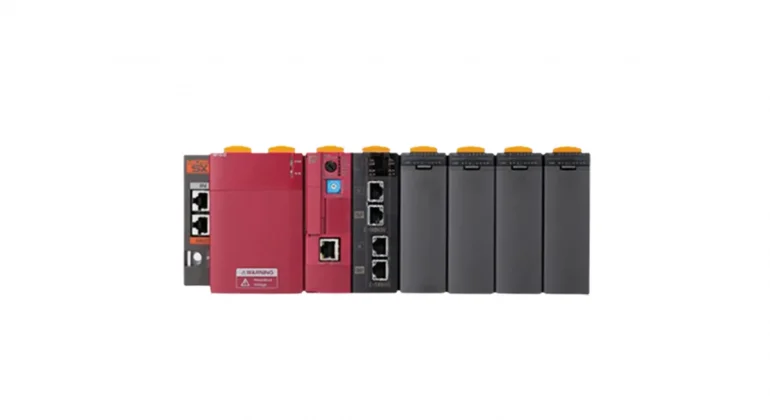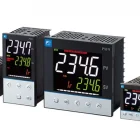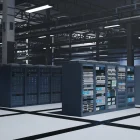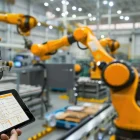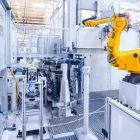A PLC is a part of industrial automation that has transformed numerous sectors, increasing efficiency, precision, and productivity. From manufacturing to transportation, automation has redefined how industries operate. The journey began with basic control systems, evolving into sophisticated technologies like Programmable Logic Controllers (PLCs). This article provides a comprehensive understanding of PLCs, their functionalities, and their extensive applications across various industries.
What are PLCs?
A Programmable Logic Controller (PLC) is an industrial computer designed to control and monitor electromechanical processes. Unlike standard computers, they are ruggedized to withstand harsh conditions like dust, moisture, heat, and cold. Think of it as a “mini-computer” tailored for industrial control. Core components of a PLC include:
-
- CPU (Central Processing Unit): The brain of the PLC, executing instructions and performing calculations.
-
- Memory: Stores the control program and data.
-
- Input/Output (I/O) Modules: Connect the PLC to sensors and actuators, receiving input signals and sending output commands.
How They Work
PLCs operate through a cyclical process known as a scan cycle:
-
- Input Scan: The PLC reads the status of all input devices connected to it.
-
- Program Execution: The PLC executes the control program based on the input data.
-
- Output Scan: The PLC updates the status of all output devices based on the program’s results.
Sensors provide input signals to the PLC, which the PLC’s program logic then processes. This logic generates output signals that control actuators, valves, motors, and other equipment.
PLC Programming Languages
PLCs can be programmed using several languages, each with its strengths:
-
- Ladder Logic: Uses graphical symbols resembling relay circuits, ideal for sequential control.
-
- Structured Text: A high-level language similar to Pascal, suitable for complex algorithms.
-
- Function Block Diagram: Uses graphical blocks to represent functions, useful for process control.
-
- Instruction List: A low-level assembly language, providing fine-grained control.
-
- Sequential Function Chart: Organizes programs into sequential steps, suitable for batch processes.
Pro-Tip: Document everything. Proper documentation is crucial. Document your code, hardware configurations, and any changes made. This will be invaluable for troubleshooting, maintenance, and future modifications.
Key Benefits
Compared to traditional control systems, PLCs offer numerous advantages:
-
- Increased Flexibility and Reprogrammability: PLCs can be easily reprogrammed to adapt to changing requirements.
-
- Improved Accuracy and Precision: PLCs provide precise control over industrial processes.
-
- Reduced Downtime and Maintenance: Their robust design minimizes downtime and maintenance costs.
-
- Enhanced Data Collection and Monitoring: PLCs can collect and monitor data for analysis and optimization.
-
- Cost-Effectiveness: While the initial investment might be higher, the long-term benefits provide cost savings.
Applications
PLCs are used across a wide array of industries:
-
- Manufacturing: Automating assembly lines, robotic systems, and material handling.
-
- Automotive: Controlling engine performance and conducting vehicle testing.
-
- Food and Beverage: Managing packaging and processing operations.
-
- Oil and Gas: Controlling pipelines and automating refinery processes.
-
- Water and Wastewater Treatment: Monitoring and controlling treatment processes.
-
- Building Automation: Managing HVAC systems and lighting controls.
-
- Transportation: Controlling traffic signals and railway systems.
-
- Energy: Overseeing power generation and distribution.
Factors to Consider in Selecting the Right One
Choosing the right PLC requires careful consideration:
-
- Number and Type of I/O Points: Ensure the PLC has enough I/O points for current and future needs.
-
- Processing Speed and Memory Capacity: Select a PLC with adequate processing power and memory for the application.
-
- Communication Protocols: Ensure compatibility with existing systems using protocols like Ethernet or Modbus.
-
- Programming Language Support: Choose a PLC that supports the preferred programming language.
-
- Environmental Requirements: Consider temperature, humidity, and other environmental factors.
-
- Cost and Availability: Balance performance with budget and ensure the PLC is readily available.
Pro-Tip: Stay up-to-date. PLC technology is constantly evolving. Keep learning about new programming techniques, communication protocols, and industry best practices. Attend training courses, workshops, and conferences to stay ahead of the curve.
Advancements and Trends
PLC technology continues to evolve:
Integration with IoT and Cloud Computing
PLCs are increasingly connected to the Industrial Internet of Things (IoT) and cloud platforms.
Artificial Intelligence (AI) and Machine Learning
AI and machine learning are being integrated into PLCs for advanced control and optimization.
Enhanced Cybersecurity
Robust security features are crucial to protect PLCs from cyber threats.
Improved Connectivity
Better communication capabilities enable seamless integration with other systems.
Modularity and Scalability
Modular designs allow for easy expansion and customization.
PLCs are indispensable components of modern industrial automation, offering flexibility, precision, and reliability. As technology advances, PLCs will continue to evolve, playing a pivotal role in shaping the future of industry.
FAQs
What is the difference between a PLC and a microcontroller?
While both PLCs and microcontrollers are used for control applications, they serve different purposes. Microcontrollers are typically used for simpler, embedded tasks in consumer devices or small-scale automation. PLCs, on the other hand, are designed for complex industrial automation, offering robust input/output capabilities, industrial-grade durability, and specialized programming languages. Think of a microcontroller as the “brain” in a single appliance, while a PLC is the “brain” managing an entire factory floor.
How do PLCs communicate with other devices?
PLCs use various communication protocols to connect with other devices, such as sensors, actuators, HMIs (Human Machine Interfaces), and other PLCs. Common protocols include Modbus, Profibus, Ethernet/IP, and PROFINET. The choice of protocol depends on the specific application and the devices being connected.
What are the main challenges of using PLCs for predictive maintenance?
The following are the main challenges:
-
- Expertise Needed: Requires skilled personnel for PLC programming, data analysis, and system integration.
-
- Cost: Initial investment in sensors, software, and training can be high.
-
- Data Quality: Predictive maintenance depends on complete and accurate data from PLCs.
-
- PLC Limitations: PLCs are designed for control, not extensive data collection/analysis.
-
- Integration Complexity: Combining PLC data with other systems can be challenging.
How do PLCs enhance predictive maintenance?
PLCs enhance predictive maintenance by providing a flexible and reliable platform for real-time equipment monitoring and data collection. Through sensors, PLCs gather data on key performance indicators such as vibration, temperature, and pressure. By analyzing trends in this sensor data, maintenance teams can identify potential problems before they escalate into costly downtime.
PLCs with machine learning capabilities can learn data patterns of nominal machine behavior and quickly detect anomalies, enabling proactive responses and minimizing machine downtime. Integrating PLC data with CMMS software and cloud platforms further optimizes maintenance strategies through real-time data, advanced analytics, and AI-driven insights.
About Fuji Electric Sales Philippines, Inc.
As the Philippine subsidiary of Japan’s Fuji Electric Co., Ltd., Fuji Electric Sales Philippines, Inc. leads the promotion, sales, and support of Fuji Electric products. The company delivers solutions in power electronics, automation, and energy efficiency that help shape the country’s industrial and electrical development.
Interested in upgrading your automation systems with advanced PLC technology? Contact Fuji Electric through:
Harold Alvarez
Sales Engineer
0917 825 8293



